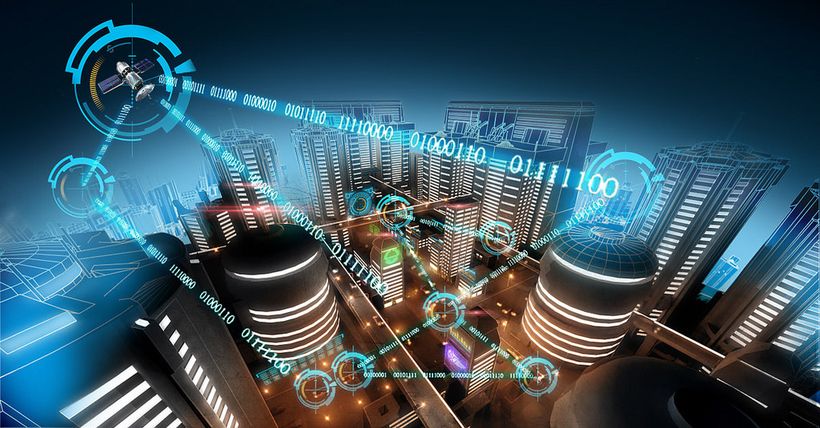Human beings have ascended from barbarism into civilization in just 10 million years, thanks in large part to modern science and systems of governance. Urbanization is one of the results of our advancement, with cities representing our technological prowess and the rich culture our species has achieved over millennia.
Cities throughout the world are expected to rapidly expand in the coming decades. We need new strategies for creating the places where people live and work, as growing urban populations compound city-centric problems like aging infrastructure, pollution, and traffic congestion. Solutions to these problems and other challenges that lie ahead in the future — continuing to fight poverty, offering opportunities for upward mobility, addressing climate change, amongst others — hinge on developing stronger, more functional cities. This begs the question: how can cities accommodate this growth?
Anticipating a future with more people and dwindling resources, many cities have begun to deploy a variety of innovative services and applications to streamline operations and improve the urban experience for local residents and travelers-by. These tech-enabled “smart cities” are looking to improve city-dwellers’ quality of life in a sustainable way and are using technology to make crowded urban centers more efficient and elegant.
So much innovation is happening in so many places right now. These are exciting times. With seemingly endless possibilities for the future, however, it can be difficult to sort out the smart city trends that have real promise and staying power from the trends whose fate is not unlike New Coke’s. It’s not always clear what is fad and what will change the world. Here’s my take on the key trends and innovations affecting the smart-cities landscape.
Strategic Alliances + Partnerships
Despite recognizing the value of investing in infrastructure updates and citywide internet connectivity, many communities lack the resources and financial wherewithal to implement smart city infrastructure and technology projects. Strategic alliances formed among government groups, industry experts, and academic researchers, have emerged as an integral tool driving smart city innovation and overcoming gaps in funding and technical expertise. Local governments and private-sector institutions increasingly see the power of these partnerships, not only as a way to address the discrepancy between city needs and resources, but for their creative potential. In that same vein, the innovative potential derived from collaborations is a good way to introduce the next smart city trend I will discuss.
Big Data / Open Data
The general consensus among researchers is that smart infrastructure and adoption of the Internet of Things will substantially progress in the next decade. As the value of data as a commodity becomes increasingly clear, cities have started to realize the implications of data collection, how it can be used to improve quality of life. Open-source data and predictive analytics empower local governments with a tremendous capacity to develop innovative solutions to urban challenges. Access to these data also gives cities the wherewithal to better understand and respond to citizens’ needs, as well as allocate public resources more efficiently.
By leveraging the Internet of Things’ big data capabilities, cities can monitor transit and infrastructure conditions in real-time; so they can be proactiveabout repairing potholes and broken streetlights, all the while equipping local police and fire departments with more efficient response networks. Currently, partnerships like MIT’s Real Estate Innovation Lab, a Seattle-based project called AccessMap, and New York City’s LinkNYC initiative are demonstrating what can happen — and how unique insights are often realized — when disparate data sets are brought together. By sharing important, if seemingly unrelated, data, these collaborations have found new ways to deliver city services more efficiently.
For instance, AccessMap Seattle analyzes information about sidewalk elevation, curb ramps, and construction projects to map out routes that are handicap-accessible. Of course, cities will struggle as they figure out the best way to go about consuming such large volumes of data. With vast amounts of data, complications tend to arise, as the International Data Corporation’s (IDC) Smart City Team explains. “Not only is this data unstructured in the form of text, video, images and audio, but it also comes from a variety of sources that exist independent of government,” the team points out. “This presents a challenge since data from these sources can be highly relevant and useful for improving government services.”
Tech-Enabled Transit
Mobility is a means of accomplishing more in life. Transportation, at its essence, twins with access to opportunities. This includes education opportunities and the ability to find work (and the ability to commute to that work), amongst others. Columbus, Ohio’s plan to establish a “smart corridor” in one economically disadvantaged area of Ohio’s capital city, aims to make transportation and public transit more accessible for its residents so that the local economy might improve. To some civil engineers and urban planners, the elimination of traffic congestion and gridlock is the stuff of fantasy, however, the U.S. Department of Transportation believes this goal can be achieved.
Start-ups like Placemeter and Remix would likely agree with the DoT’s assessment. Interactive planning tools like Remix streamline and inform how public transit routes are designed, providing transportation agencies and city governments with the ability to map out new transit scenarios and visualize the implications of those scenarios — in terms of cost, for example, or by looking at the demographics of the people who would be affected.
In addition to optimizing public transit, there is real potential for ride-sharing applications and the autonomous vehicles to revolutionize transportation in the future.
High Speed Broadband
It is worth emphasizing, however, that smart cities begin with connectivity. High speed broadband internet service is a modern utility, akin to electricity and running water. Without it, discussing sensors that can improve energy efficiency and optimize waste management services is moot. High bandwidth networks that are capable of producing immense connectivity at little to no cost are fundamental to the success of smart city networks.
The success of fiber networks in formerly-depressed cities such as Chattanooga, TN, have brought more awareness to the economic value of offering reliable citywide internet access. “Like the presence of well-paved roads, good internet access doesn’t guarantee that a city will be successful. But the lack of it guarantees that a community will get left behind as the economy increasingly demands that companies compete not just with their neighbors next door, but with the entire world,” Jason Koebler writes in VICE’s Motherboard. Perhaps more importantly, cities that invest in widespread connectivity have the ability, too, to implement new technologies that will allow them to invest in smart city research and education. “Cities need to be on the right side of the digital divide to succeed,” Koebler says. “It is inexcusable not to employ big data and advanced metrics in future planning.”

